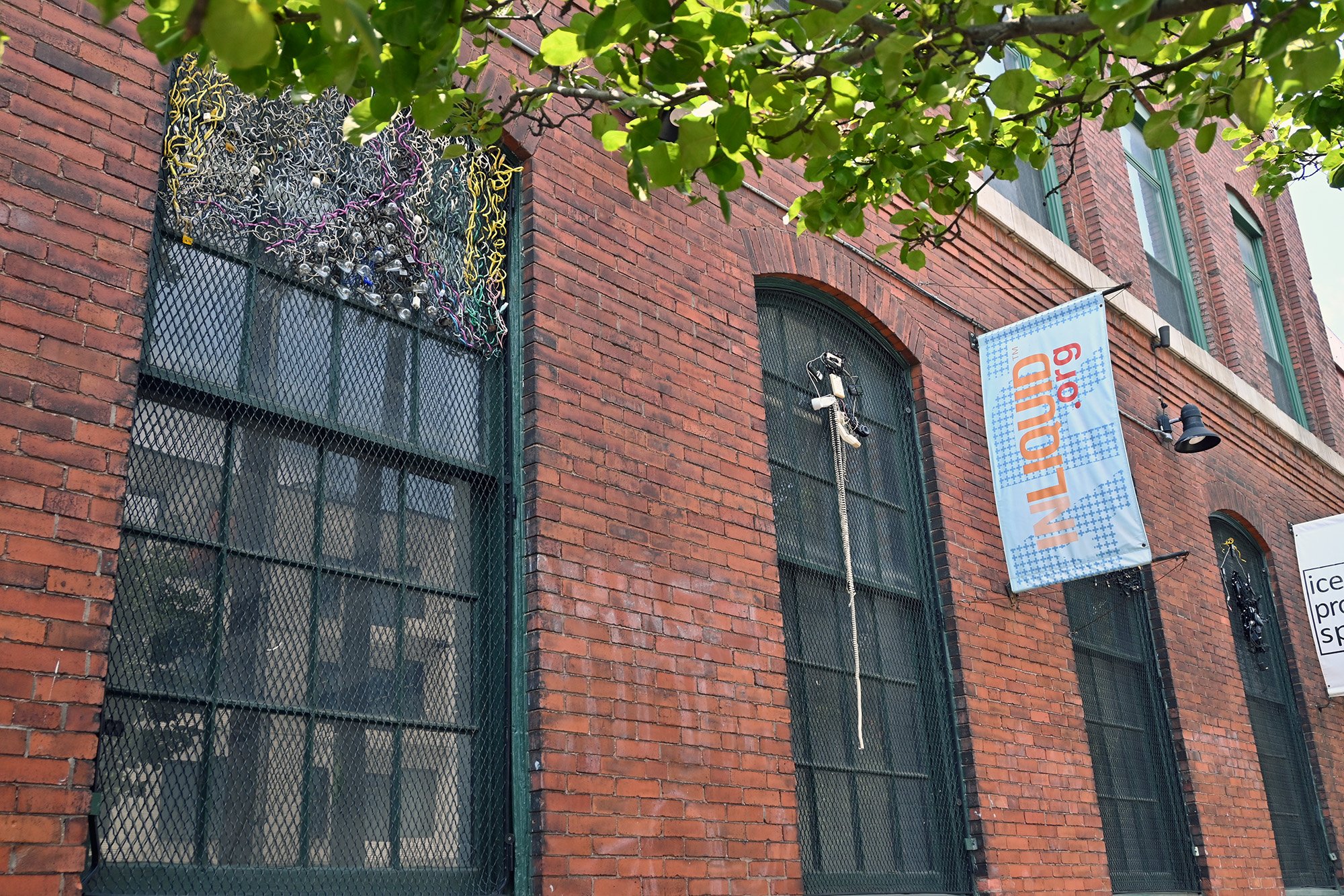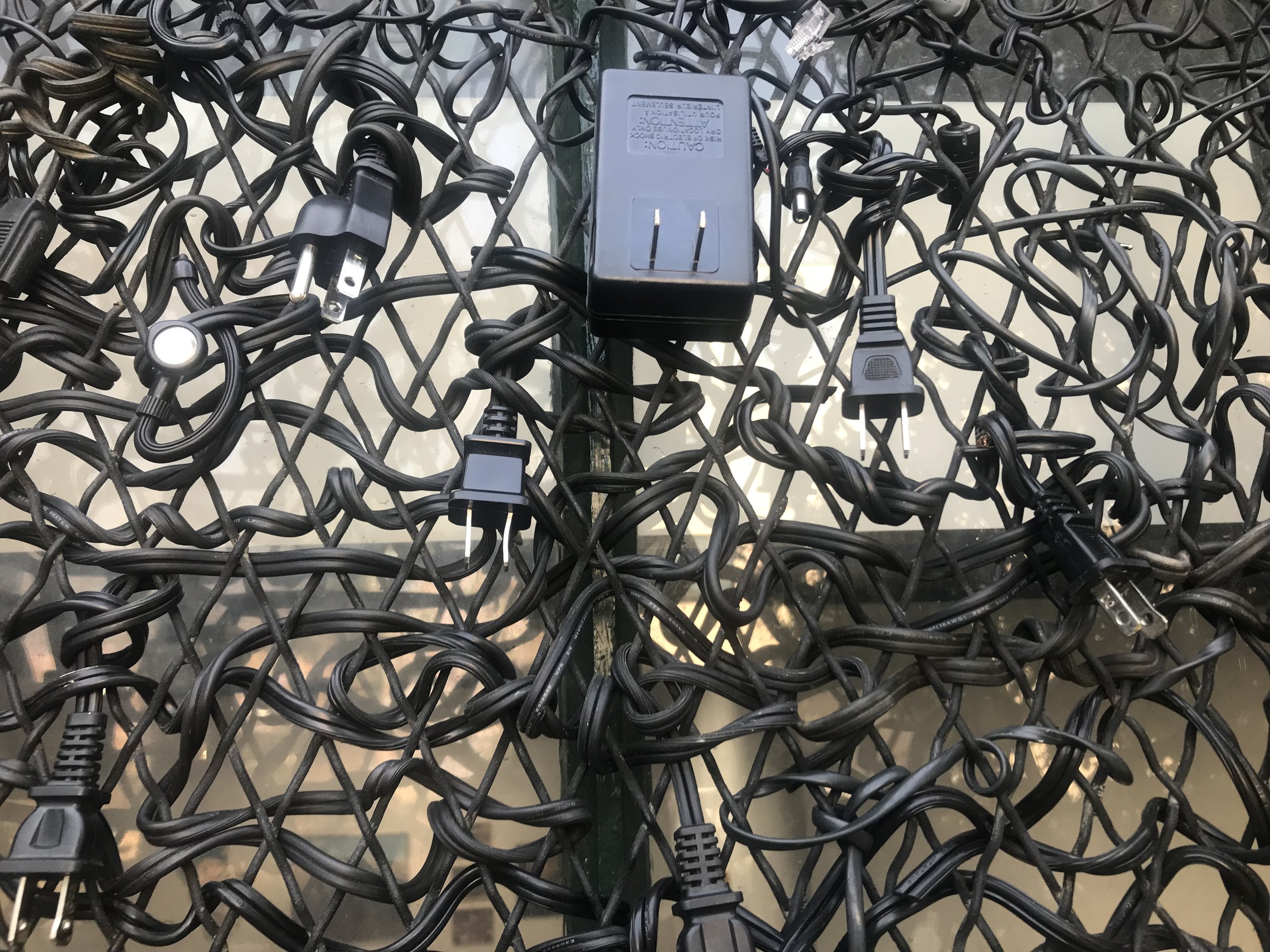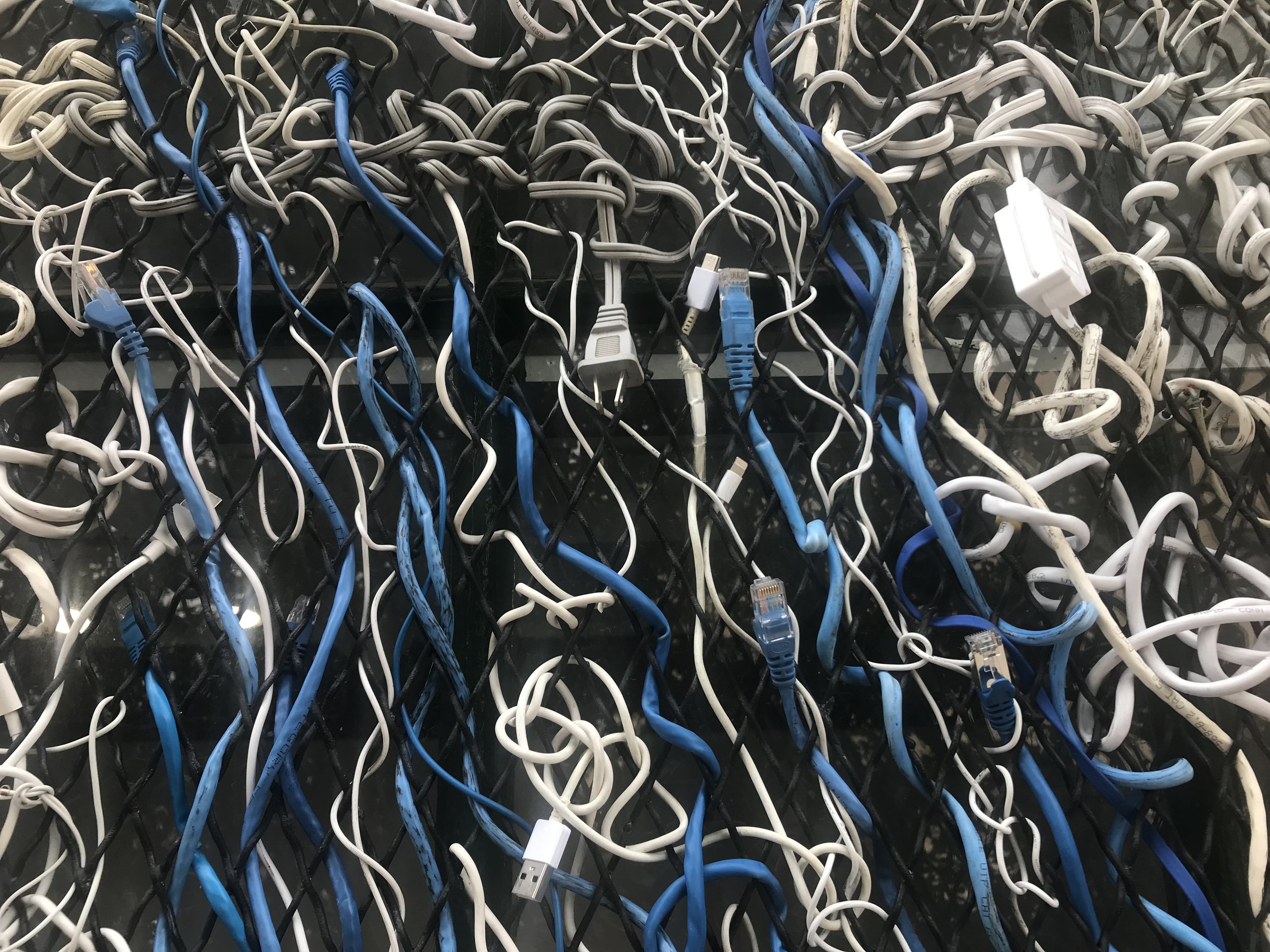The Hungry Body looks closely at our relationship to plastic and the environmental crisis created by this ubiquitous material. I chose plastic-coated wires because, as an artist with a special interest in communication technology, I wanted to take a closer look at obsolescence and the environmental impact of this particular industry. Communication technology is made to seem as though it is ephemeral, but it produces masses of material that circulate through the ecosystem but are hostile to life. People accept an illusory division between natural and artificial, but plastic has become completely integrated into the natural world. The IAEA claims that, by weight, there will be more plastic than fish in the ocean by the year 2050. Microplastics bio-accumulate within organisms throughout the food chain, and can even be found in table salt. After the Trinseo latex spill in Delaware this spring and the threat to Philadelphia’s water supply, the question of how we are consuming plastic through our bodies came into sharp focus for me. This work looks at the porosity of the human body and the reality of what it means to live in this plastic world.
In the face of such a huge crisis, people use food to find a sense of agency and control. The microplastic supplement pills draw from a homeopathic approach to health – the idea that by choosing to consume small portions of a toxin the body will learn to fight it. I am interested in the futility of this and the frustration of not having a clear way to manage the integration of plastic into the body. The Hungry Body Radio looks at a multitude of disordered approaches to eating which try to assert control – from hot dog eating tutorials to Michelle Lotito, the man who ate an entire airplane, to an all fruit diet, extreme fasting, etc. – juxtaposed with information about plastics. It asks, what other kinds of creatures are we asking to take on the task of consuming and cohabitating with plastic? How is plastic guiding evolution and changing life on this planet?
This artwork was made as part of the InLiquid’s 40th Parallel North Preservation Brigade with InLiquid and in collaboration with Rabbit Recycling, where all of the resources were sourced and where they will be returned to after the exhibition. When the wires are eventually recycled, they will be shredded into small pieces before separating the plastic and metal using gravity and electrostatic stimulation. Recyclers can then recycle the metal and the plastic separately.








